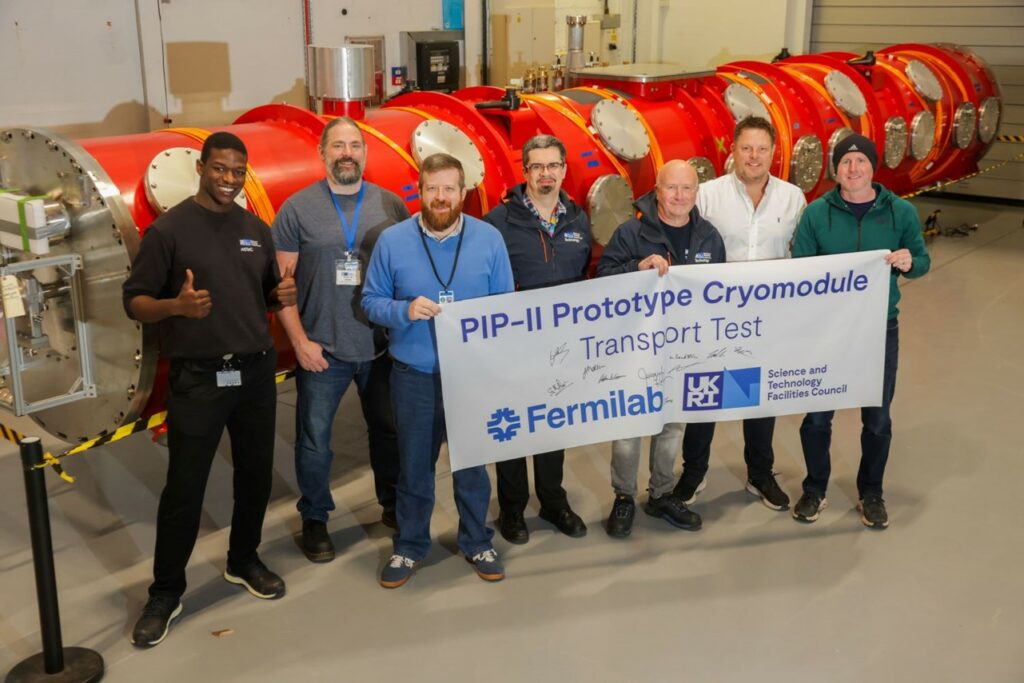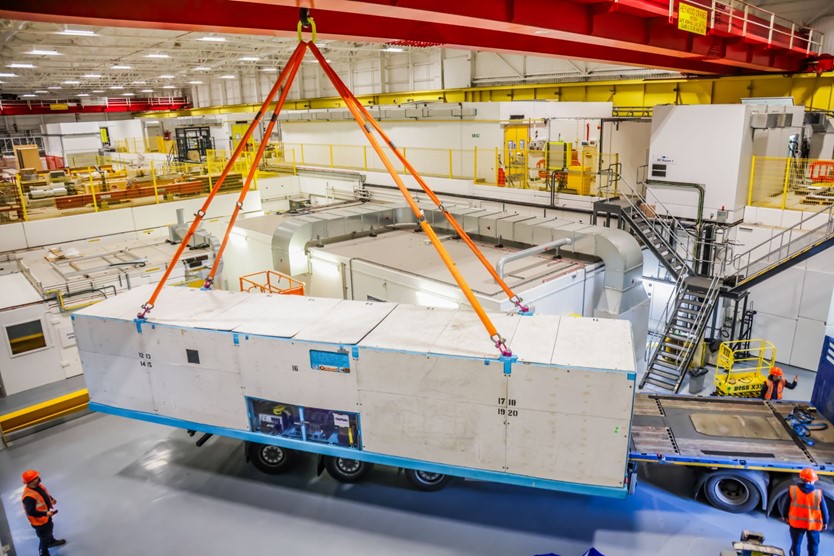In May 2021, STFC and Fermi National Accelerator Laboratory have agreed to collaborate on building one of the world’s most powerful linear accelerators.
Based at the US Department of Energy’s Fermilab, the Proton Improvement Plan-II (PIP-II) accelerator, currently under construction, is an essential upgrade to the accelerator complex. Once complete, it will enable the world’s most powerful high-energy neutrino beams.

In December last year, Daresbury Laboratory welcomed partners from Fermi National Accelerator Laboratory (FNAL) alongside a prototype accelerator cryomodule for the PIP–II project. The module was brought to the lab in a next-generation transportation frame, designed at Daresbury.
Teams of scientists, engineers and technicians from the Cockcroft Institute and Daresbury Laboratory, working with The Welding Institute (TWI) in Cambridge, will construct three 10 metre-long cryomodules, each housing six SRF cavities as part of the UK’s contribution to the PIP-II.
Given the immense size and cost of the cryomodules (each contain a string of six super conducting cavities that form a section of accelerator beam line), it is imperative that the commissioned modules arrive at Fermilab in pristine condition. This exercise was part of a transport test which will ensure that the three new cryomodules will get to their place on the PIP-II accelerator in Illinois safely.

The prototype cryomodule flew on a cargo plane from Fermilab to Luxembourg, with scientist Jeremiah Holzbauer and Senior Technician Adam Wixson, also from Fermilab. Once they were happy it had travelled well, it was loaded onto a lorry for the trip across Europe. On arrival the module wase examined for any signs of damage caused by transportation. Readings were taken from sensors attached to the transportation frame to determine how much movement there had been on the roads.
The whole process was then reversed, with the module arriving back at FNAL six days after shipping.
This successful test now paves the way for Daresbury teams to begin building three of the 23 cryomodules needed to power the 215 metre-long linear accelerator that will provide the engine for the highly-anticipated global science experiment, the Deep Underground Neutrino Experiment (DUNE), hosted by Fermilab.
Further reading:
Cockcroft Institute scientists play vital role in creating world’s most powerful neutrino beam
